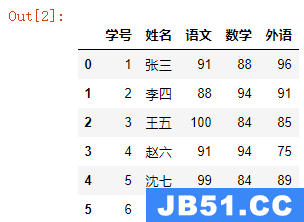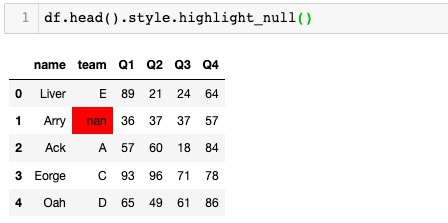如果读取具有默认列名的文件,该如何命名?
df [1]似乎几乎一直都能工作.但是,在编写条件时会抱怨类型:
In [60]: cond = ((df[1] != node) & (df[2] != deco))
---------------------------------------------------------------------------
TypeError Traceback (most recent call last)
/home/ferreirafm/work/colab/SNP/rawdata/<ipython-input-60-513a433bfeb5> in <module>()
----> 1 cond = ((df[1] != node) & (df[2] != deco))
/usr/lib64/python2.7/site-packages/pandas/core/series.pyc in wrapper(self, other)
140 if np.isscalar(res):
141 raise TypeError('Could not compare %s type with Series'
--> 142 % type(other))
143 return Series(na_op(values, other),
144 index=self.index, name=self.name)
TypeError: Could not compare <type 'str'> type with Series
解决方法:
似乎您将一系列标量值与字符串进行了比较:
In [73]: node = 'a'
In [74]: deco = 'b'
In [75]: data = [(10, 'a', 1), (11, 'b', 2), (12, 'c', 3)]
In [76]: df = pd.DataFrame(data)
In [77]: df
Out[77]:
0 1 2
0 10 a 1
1 11 b 2
2 12 c 3
In [78]: cond = ((df[1] != node) & (df[2] != deco))
---------------------------------------------------------------------------
TypeError Traceback (most recent call last)
<ipython-input-78-0afad3702859> in <module>()
----> 1 cond = ((df[1] != node) & (df[2] != deco))
/home/.../python2.7/site-packages/pandas/core/series.pyc in wrapper(self, other)
140 if np.isscalar(res):
141 raise TypeError('Could not compare %s type with Series'
--> 142 % type(other))
143 return Series(na_op(values, other),
144 index=self.index, name=self.name)
TypeError: Could not compare <type 'str'> type with Series
请注意,熊猫可以处理一系列字符串和数字,但是比较字符串和数字的确没有意义,因此错误消息很有用.
但是,熊猫也许应该给出更详细的错误信息.
如果您对第2列的条件是数字,那么它将起作用:
In [79]: deco = 3
In [80]: cond = ((df[1] != node) & (df[2] != deco))
In [81]: df[cond]
Out[81]:
0 1 2
1 11 b 2
一些评论:
也许您的一些困惑是由于熊猫的设计决定引起的:
如果您使用read_csv从文件中读取数据,则将所得数据帧的默认列名称设置为X.1到X.N(对于版本== 0.9,则设置为X1到XN),它们是字符串.
如果从现有数组或列表或其他内容创建数据框,则列名默认为0到N,并且是整数.
In [23]: df = pd.read_csv(StringIO(data), header=None)
In [24]: df.columns
Out[24]: Index([X.1, X.2, X.3], dtype=object)
In [25]: df.columns[0]
Out[25]: 'X.1'
In [26]: type(df.columns[0])
Out[26]: str
In [27]: df = pd.DataFrame(randn(2,3))
In [30]: df.columns
Out[30]: Int64Index([0, 1, 2])
In [31]: df.columns[0]
Out[31]: 0
In [32]: type(df.columns[0])
Out[32]: numpy.int64
所以你
In [60]: cond = ((df[1] != node) & (df[2] != deco))
如果df [1]和df [2]的类型与node和deco的类型相同,则它应该适用于从数组或其他内容创建的数据帧.
如果您已使用read_csv读取文件,则
In [60]: cond = ((df['X.2'] != node) & (df['X.3'] != deco))
应该与版本< 0.9,虽然应该是
In [60]: cond = ((df['X2'] != node) & (df['X3'] != deco))
版本> = 0.9.




